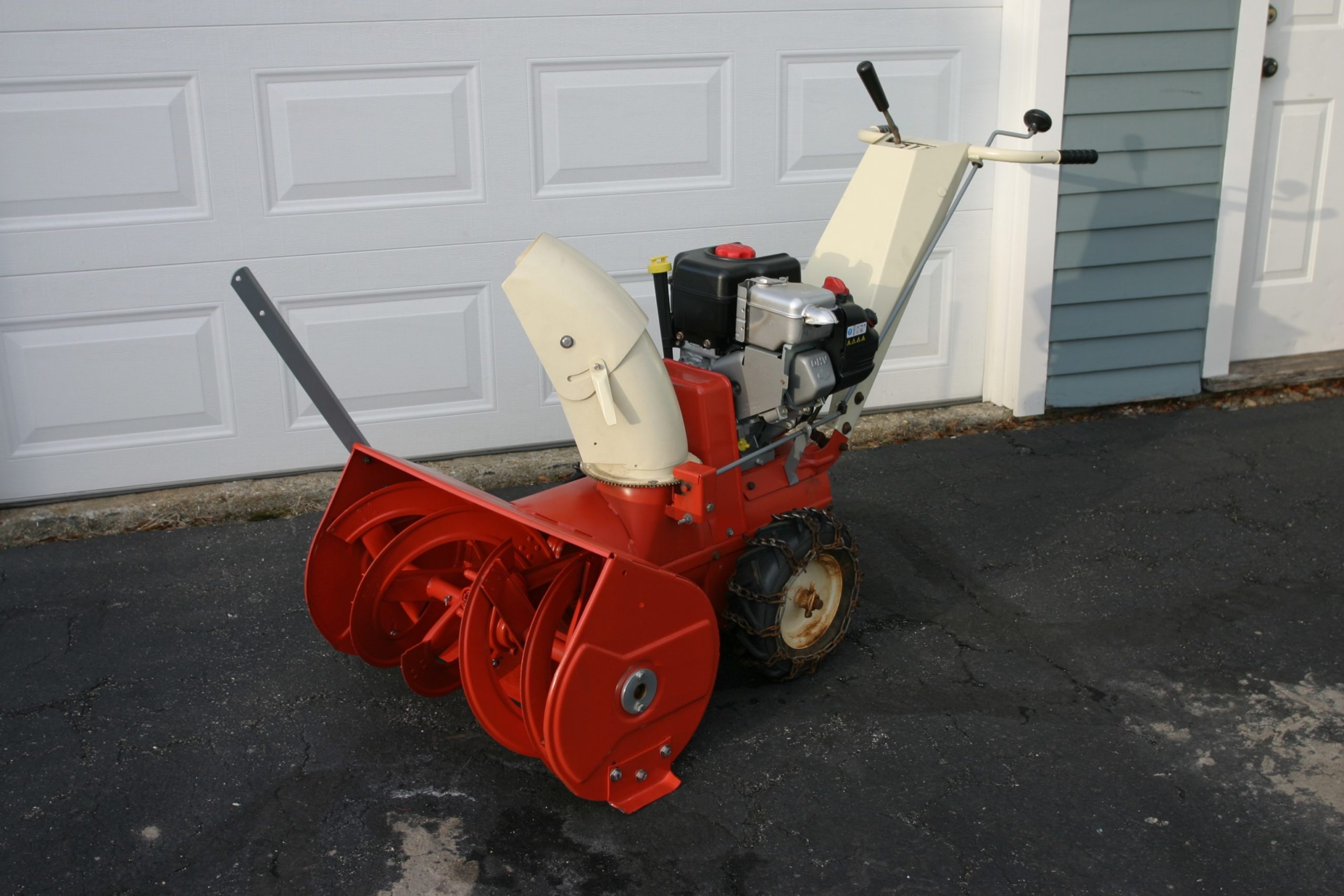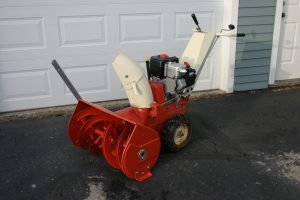Be Safe With These Snowblower Tips

When you take your brand new snowblower out for a spin, make sure to be careful so you don’t become a statistic. Doctors begin to see too many snowblower related accidents by mid-December. A recent article described the view from one plastic surgeon in Onatrio.
People that run into trouble aren’t necessarily inexperienced in using a snowthrower. One of those unlucky enough to take Andrade’s attention was Dane Mutic, who ran into trouble in late November 2008 as he cleared the driveway after a heavy snowfall.

“I’ve had this snowblower for a number of years and I’ve always been careful with it, but for some reason it got blocked up,” he said from his home in Newmarket, as he was still recuperating.”It got iced up and it was really blocked, so nothing was shooting up the auger, the chute. And for some unknown reason — I don’t know why, I could never answer that correctly — I went to use my hand to unclog the snow.”
“The motor was still running, but he thought the unit was away as it has a clutch system in which a lever is pressed down to really begin the augers, he said.”So I don’t know if I pressed it with my other hand or it was off or it was blocked off, and once I place my hands in, the snow gave way,” he said. “Sometimes it is under tension and it might have started up that way. But my hand got stuck in there.”
The accident happened in late afternoon. Mautic cried for help, and some teenagers from down the street answered the call. Unfortunately, they couldn’t do much. A neighbour with a crowbar managed to free his mangled hands. “And when I took off my glove there was a lot of soft-tissue damage,” he said.
(Source: https://www.thestar.com/life/health_wellness/2008/12/22/snowblower_injuries_rack_up_with_early_snow_fall.html)
He’s not an isolated case, by any means.The U.S. Consumer Products Safety Commission has indicated snowblower injuries have been on the rise since 2006.
SNOW SAFETY IN THE DRIVEWAY
Keep these tips in mind from the US Consumer Product Safety Council and the Canadian Safety Council about using a snowblower:
- Buy a machine approved by CSA International.
- Never add fuel when the engine is hot or running.
- Never pull, always push a snowblower. The machine could land on you should you stumble while pulling it.
- Gravel can become a dangerous projectile when fired by a snowblower’s exhaust chute. Leave a ground clearance of 1 inch when clearing snow from an area of gravel or crushed stone.
- Shut off the snowblower when you are not using it. It only takes a few seconds for a child to be hurt by an unattended machine.
- Before servicing a gasoline-powered snowblower, you should disconnect the spark plug wire so that you can be assured that the engine won’t accidentally start.
- Hearing protection is a good idea when using your snowblower.
- A long scarf and other loose-fitting clothes can get caught in a snowblower’s machines and cause injury.
A study published in 2008 in the Annals of Plastic Surgery examined the questionnaires and treatment records of 22 people with snowblower injuries to the hand between 2002 and 2005.
Most the patients, all treated at Hartford Hospital in Hartford, Conn., were aware of safety warnings and 82 percent hurt themselves with the machine running. Half held bachelor or master degrees. Four individuals had consumed alcoholic drinks before the injury. Averaged results showed machine age of 21 years, and operator experience of 15 years.
“Operator inexperience, low operator intellect and excessive alcohol consumption don’t appear to contribute to harm,” stated an abstract of the study. “Injuries may be prevented in the future by improving snowblower design and/or by making brief public service announcements.”
Instead, it stated significant expertise, older machines, short duration of use before harm and underlying misconceptions about snowthrower design and operation typically set the stage for injury.

